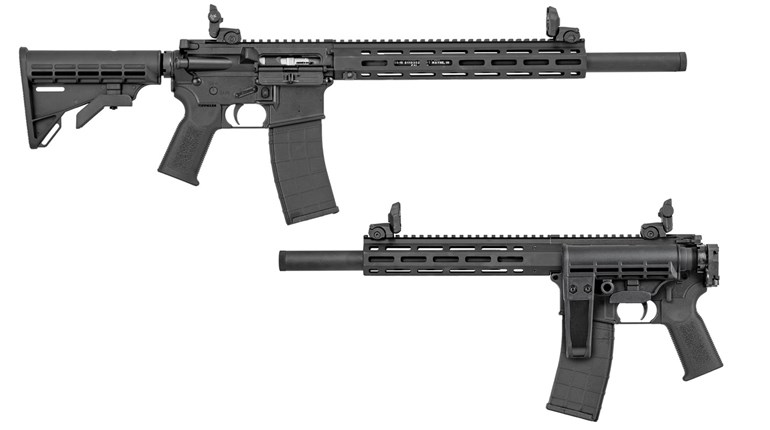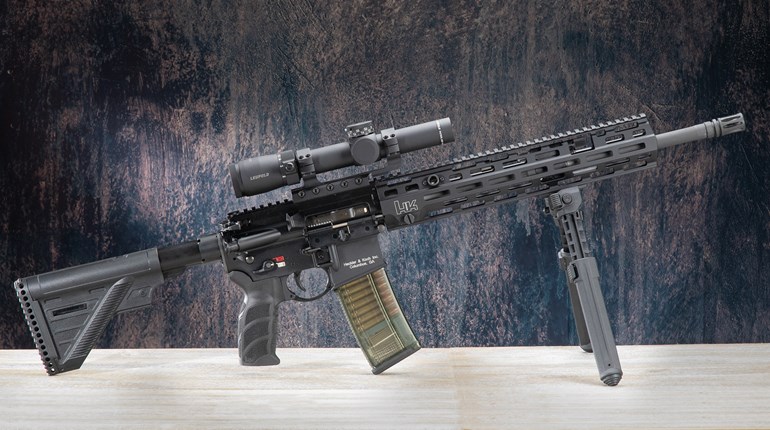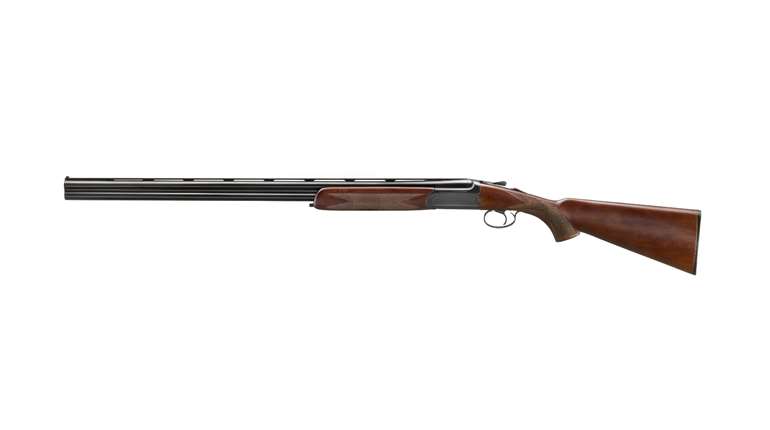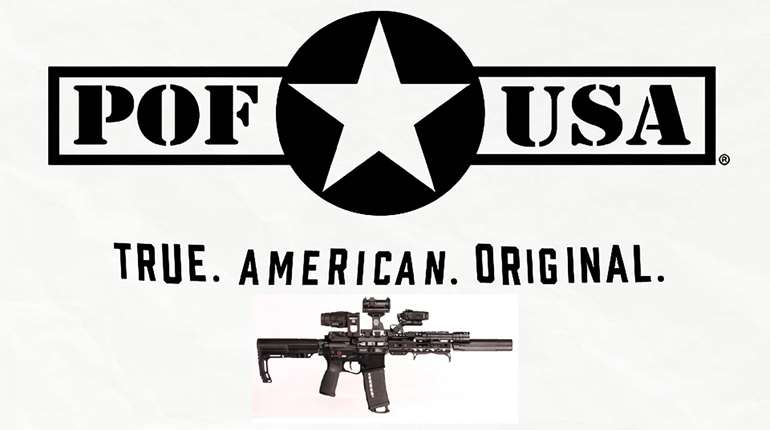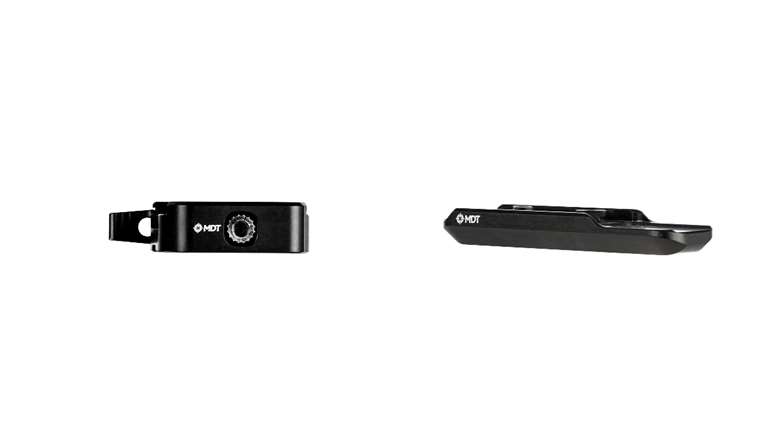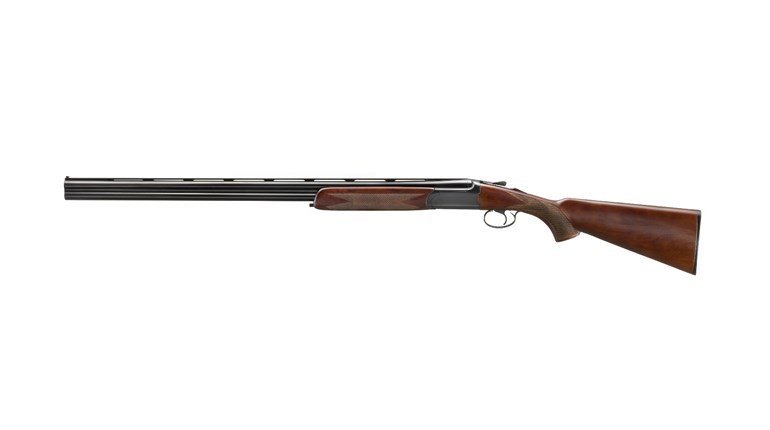
AR-15-style carbines are the most popular long arms in America these days, and many people are buying or building their own for competition, hunting, varmint control and more often than not, self-defense. While many folks invest in professional instruction on how to operate and employ their new carbine, others wish to go it alone and train independently or with friends and family. A common question for new AR owners and even some more experienced shooters is, at what distance should the AR-style carbine be zeroed? To avoid any confusion, the term "zero" means the point at which the path of the bullet intersects with the shooter's line of sight (LOS).
My intent is to provide the "80-percent solution" for people who may have limited range facilities and are concerned about placing accurate fire on bi-pedal mammals of the outlaw variety. Also, I am totally committed to keeping things as simple as possible when planning for encounters with an armed threat in your own home or on your property.
The Long Answer
The long answer is (as usual), "that depends." What does it depend on? A number of factors: Intended use, type of sight, caliber, type of ammo and barrel length, to name a few.
For our purposes, let's keep it to the following specifications: The carbine itself is chambered in 5.56 NATO/.223 Rem. with a 16-inch barrel. The sighting device is a non-magnified red-dot/reflex sight, as such units are most appropriate for short-range, CQB-type shooting—engaging targets quickly while under duress. Ammunition will be limited to 55-grain and 62-grain FMJ loads, as they are the most prevalent. The intended use of the carbine is for home and self-defense in an urban environment for target distances of less than 200 yards, particularly less than 20 yards.
We also need to establish what an acceptable level of accuracy is for human targets within 200 yards of the shooter. In most cases, placing rounds within 3 MOA should be sufficient. This equates to all rounds impacting within 6 inches at 200 yards, 3 inches at 100 yards and less than 2 inches at 50 yards.
Two terms we need to understand are "holdover" and "holdunder." The first refers to the act of placing the point of aim (POA)—red dot, crosshairs, front sight, etc.—ABOVE the place where you want the bullet to go. The second is just the opposite, aiming BELOW where you want the bullets to go.
I have to stress one factor that all AR owners must understand and accept: The effect of the height of the sights/optic above the bore of the AR-style carbine mandates using holdovers REGARDLESS OF ZERO. Most flattop ARs will have a sight height of between 2.5 and 3 inches (depending on the mount) if using an optical sight. If you mount an optic on the carrying handle, it will be even greater. This results in the shooter needing to apply holdover when engaging targets at close range, i.e. inside a house or other structure, at distances of one to 20 yards. This holdover increases as the distance to the target decreases. At 25 yards, the holdover is about 1.5 inches, incrementally increasing to the sight height at about 7 yards and closer. This means if you want to put a bullet into the eye/nose area of a person holding a knife to a loved one's throat at a distance of 4 yards, you need to put the red dot at the hairline, or roughly 2 to 3 inches above the eyebrows.
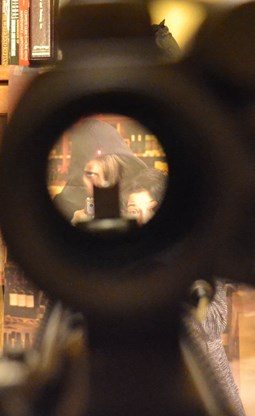 The Short Answer
The Short Answer
The short answer to the "At what distance do I zero?" question is, in my opinion, 100 yards (or meters). Here's why: The bullet should never rise above the LOS. This means the shooter does not need to use holdunder at any range, eliminating that factor and leaving only holdover as a matter of concern. The amount of holdover needed to meet the aforementioned level of accuracy is very small with a 100-yard zero—approximately 2.5 inches at 200 yards, .5 inch at 150 yards, and .75 inch at 50 yards. On most ARs using 55-grain or 62-grain ammunition, the bullet is generally never more than 3 inches below LOS until the target is beyond 210 yards. For most of us, this means that to hit a man in the chest out to 150 yards, we do not need to hold over. You can't get any simpler than that.
The bottom line: if we have a rifle/ammo combo that shoots 3 MOA or better accuracy and we do not apply any holdover at a 150-yard target, the lowest round from the resulting 4.5-inch group should be no more than 3 inches below the "X." Good enough. For engagements inside your home, at distances inside of 20 yards, you can use a consistent 2.5-inch holdover and still make acceptably accurate head shots.
What Does it All Mean?
But this AR is for self-defense inside a house. Why zero at 100 yards when the biggest room in my home is not even 10 yards? Some people may consider zeroing the carbine at a very short distance, say 15 yards, using the logic that inside their home they will never engage anything farther than that given a likely self-defense distance of less than 7 yards. That may be true, but the negative results of a 15-yard zero become obvious when examining the bullet's path at distances greater than 20 yards, and realizing that a holdover will still need to be used at shorter distances.
With a 15-yard zero, the bad news is at 10 yards the bullet is about an inch low, and at 5 yards it is about 2 inches low. You will still need to apply holdover to make a good headshot on the bad guy you meet coming into your bedroom. The really bad news is that at 25 yards, the bullet is almost 2 inches HIGH. At 50 yards it's about 6 inches ABOVE LOS and at 75 yards it's 10 inches HIGH. When you hit 100 yards, the shooter would need to aim almost 14 inches BELOW the desired point of impact, so if you ever need to make a shot outside the home, well, let's just say that's a lot to remember in a life-threatening situation.
Some may ask "What about the 25-meter zero that I used in the Army with an M16A2?" That was determined to be optimum by the Regular Army using a 20-inch barrel and M855 62-grain ammo. It has a holdunder of about 6 inches at 100 yards and 9 inches at 200 yards, which is ultimately just more you have to remember.
Another good option is the 50/200 zero. I am a big fan of the 200-yard zero, and it is very close to a 50-yard zero. My primary AR is zeroed at 200 yards, but I like to be able to engage out to the maximum effective range of the 5.56 NATO cartridge. With a 200-yard zero, the bullet does rise above LOS, but not more than about 2 inches at 120 yards, so holdunders are negligible, and the holdovers at 25 yards and closer are similar to the 100-yard zero. But I have the luxury of unlimited access to a 400-yard range. Many armed citizens may not get to train much and may not shoot at 400 yards—ever.
You have probably noticed by now that words like "approximately" and "about" are used frequently when stating the distance between the bullet's path and the shooter's LOS. This is because every carbine/ammo/sight combination will be a little different.
If at all possible, use a 100-yard/meter range to confirm zero. That is the only way to be sure. If all you can use is a 25-yard range, then the center of the group should be 1.5 inches below POA. I strongly recommend firing groups of at least 10 rounds when zeroing. Most of us make a slight error every now and then when shooting, especially during the zero process, and shooting smaller numbers of rounds per group will be affected by these errors. If you make a couple of bad shots in a five-round string, you now have 40 percent of your shots (two out of five) off POA due to shooter error. With a 10-shot group, the error rate drops to 20 percent (two of ten), so you can call one a "flyer" and blame the other on poor quality control. Then, adjust from the center of eight good shots.
Ultimately, if you have an AR for home defense, get a good, solid, 100-yard zero for your sights or optic. When the time comes, hold dead-on outside the house and a couple of inches high if you are inside. Simple enough.
Bullet Path Relative to LOS Using Different Zero Ranges
| Target Distance | 15-yard zero | 25-yard zero | 50-yard zero | 100-yard zero | 200-yard zero |
| 5 yd | -1.8 | -2.1 | -2.4 | -2.5 | -2.4 |
| 10 yd | -0.9 | -1.6 | -2.1 | -2.2 | -2.1 |
| 25 yd | +1.8 | 0.0 | -1.2 | -1.6 | -1.4 |
| 50 yd | +5.9 | +2.4 | 0.0 | -0.8 | -0.3 |
| 100 yd | +13.4 | +6.5 | +1.6 | 0.0 | +1.1 |
| 150 yd | +20 | +9.4 | +2.1 | -0.4 | +1.2 |
| 200 yd | +25 | +11 | +1.1 | -2.1 | 0.0 |
Data is an average based on information from several ballistic software programs and the author's field experience.












